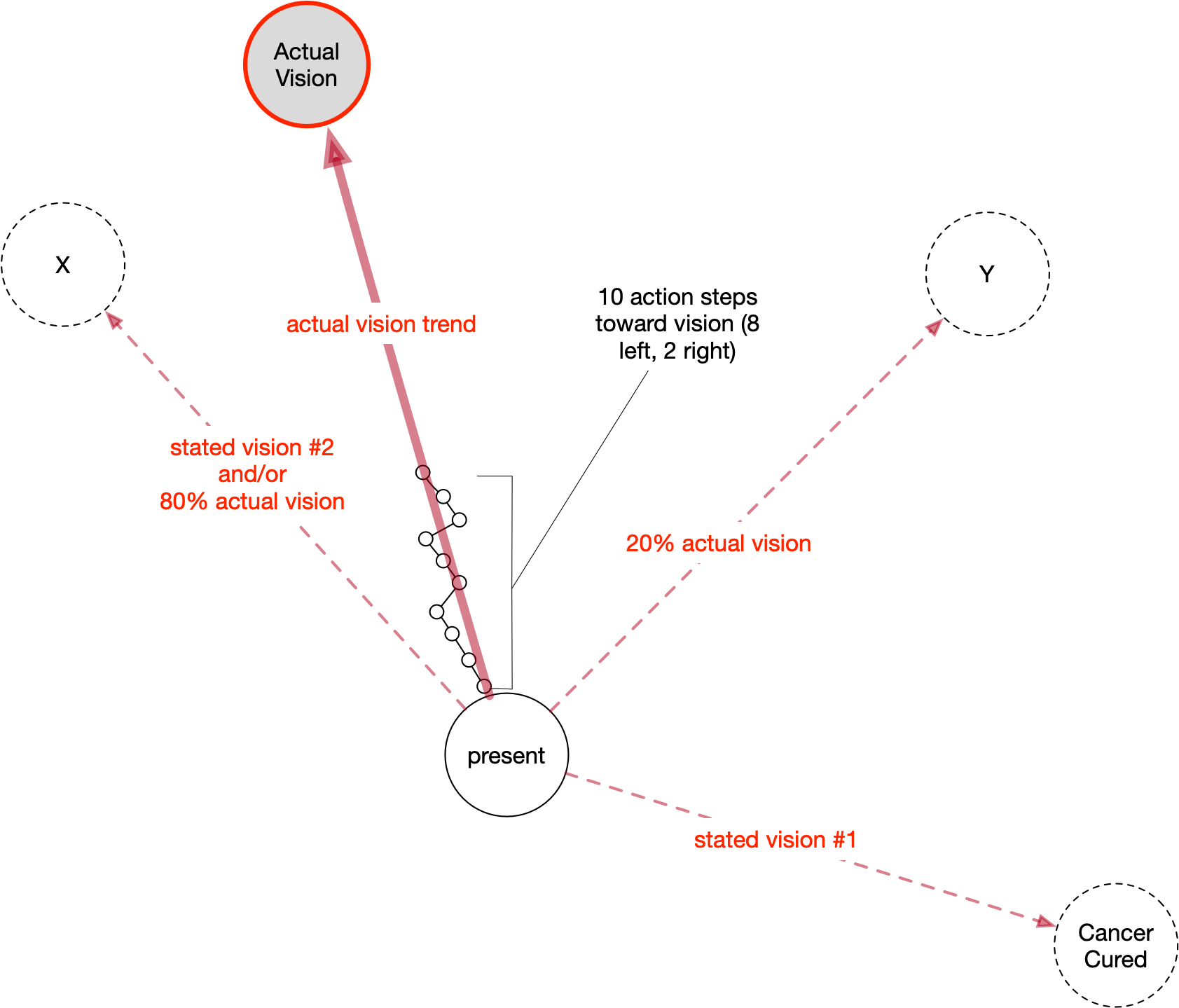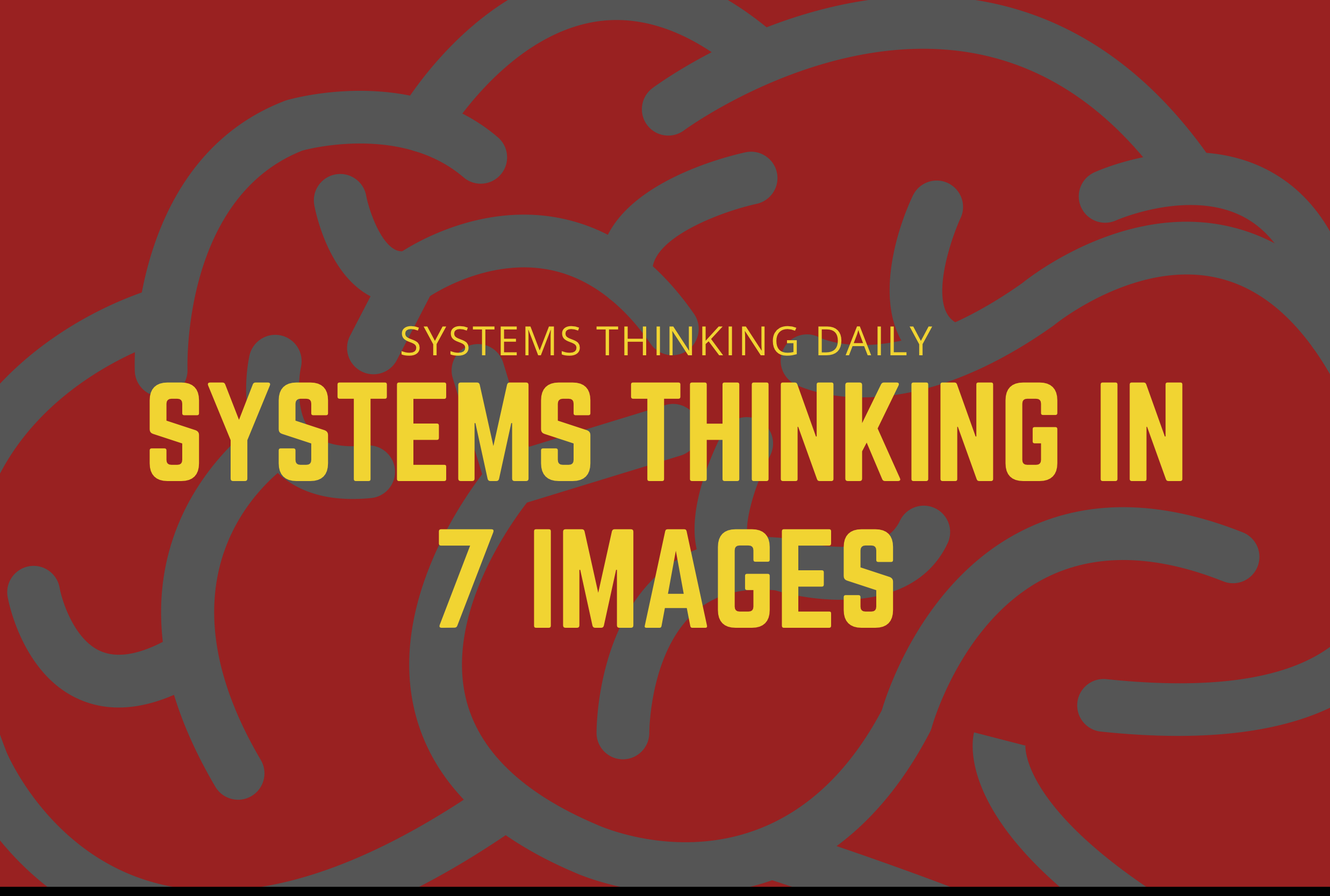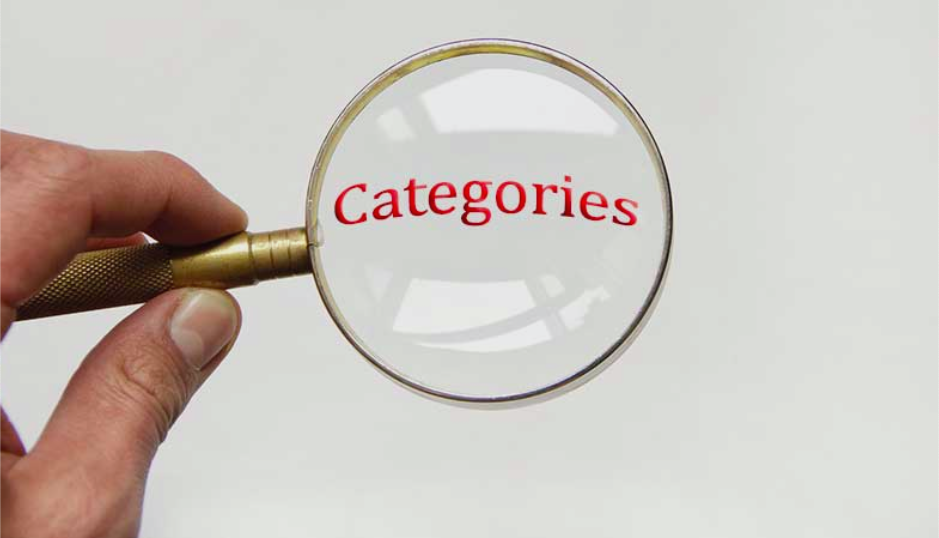Designing an Effective Vision Can Be Challenging
Designing an Effective Vision Can Be Challenging. By far, the most challenging aspect of Vision design is that they are ideally binary. Where VMCL is concerned, there are five "checks" for Vision that help you to determine whether or not you've designed an effective Vision. They are:
- Check #1: Our Vision Depicts a Desired Future State
- Check #2: Our Vision Is Intrinsically Motivating
- Check #3: Our Vision Is Short and Simple
- Check #4: Our Vision Is Measurable, Ideally Binary
- Check #5: Our Vision Lives in Hearts and Minds
A State that Can Be Measured
Perhaps the place where people have the most trouble is in the combination of Checks 1 and 4. This blog intends to remedy some of the issues people have with the implication of these two checks. The checks themselves are somewhat obvious.
- First, a well-designed Vision is a future state.
- Second, a well designed Vision can be measured.
Neither of those is where people have a problem. The problem lies in the relationship between these two Checks: a state that can be measured. The implication of this means that Visions are binary. That means that you have either arrived or not. It's a state that you and your organization can arrive at. This means that your Vision can't be ongoing. Your Vision is a noun. Your Vision is not a verb.
It is this binary part that folks have trouble with. But think of your organization as one big road trip. A journey with a bunch of folks. You all gather together (say, in New York) as a startup and you have a big converted sleeper bus. Where are you going? New Mexico. Okay, great. New Mexico is your Vision. It's a place. You can arrive there. You and your team will know when you've arrived. You can measure whether or not you have arrived in New Mexico. You can also measure along the way, how far you are from arriving in New Mexico. That's the power of a Vision. Stick and State.
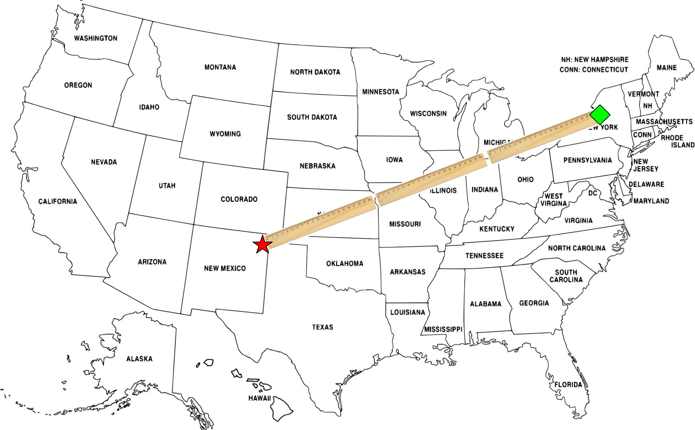
Figure 1: 'Stick and State' (pun intended)
That's what makes it measurable. It's not a moving target. You can measure how close you are or how far you are from arrival. You can measure when you get there. Organizational Visions are no different, other than that they tend to be a bit more complex and nuanced.
Here are a few of the types of organizations that people have the most difficulty reconciling for Vision.
I wanna make a million bucks
Okay, you say. But what about the organization whose end goal is just for the owners to retire financially secure or to sell? Okay, great. So your Vision is 'Retirement.' What is it going to take? $1million, $10million, $100million? That's a perfectly fine Vision, but it fails on one of the other checks—Check #2: Our Vision Is Intrinsically Motivating. The problem with a $10million Vision is that its only motivating to the people who are going to get the $10million. How to fix it? Stock options are a nice extrinsic reward, but they lack the intrinsic meaning that so many crave (even those who think they only care about the money). And unfortunately, in most organizations that utilize stock options they are mostly for the early few or the brand-enhancing few. But, what's going to motivate the everyday laborer toward the Vision?
What will surely be massively demotivating is if you as the leader of an organization have the Vision of a $10million retirement for yourself and because you don't think that will be motivating to your employees, you create a facade Vision. You may fool some folks early on, but they will eventually connect what the organization says to what it does and see through the veil. When they do, you will have lost their trust and put a stain on all future Visions. Better to be forward with what is the reality. If your business has the Vision of your retirement, there's nothing inherently wrong with that. But you are going to have to find other ways (other than the Vision) to motivate people and likely will have a rather transactional culture.
I just wanna be me.
Okay, you say. But, what about the organization that just wants to exist? That's a reasonable goal: To exist. To survive. To thrive. The problem is it's not super measurable. For how long? In what way? Thus, it becomes a Vision that isn't entirely directive. It doesn't tell you which way to go (which can also be a de-motivator). So, if you're this kind of organization then simply put some time horizon on it. To be around in 100 years. That's a vision. It is a stick and a state. It is measurable and binary. We know how much progress we've made and how much we have to go. Here again, is it motivating? Not so much. Many systems have survival as a goal state. The question is, as an organizational leader is that going to be enough? Is simply existing enough to keep talent? Usually, it isn't. Because talent can go elsewhere. Talent can go somewhere else that is existing but also has a Vision to get somewhere. Let's return to our bus example. If instead of New Mexico we said let's just go on a journey together and drive wherever we want to go whenever we want to and sometimes nowhere at all. We'll just exist...on the road. How long will people put up with that journey? How long until they want something more? Or, let's say we add a variable. Our goal is to drive around and make people happy (that's a great Mission by the way). So, we go about driving around and making people happy. To what end? To no end, you say. To which I would say, you're not being honest. There is some end state, you're just being implicit about it. If we did this for long enough, and effectively enough, then no one would need or want our happiness service. Everyone would be happy and no one would need happiness. So, the end state is that everyone has enough happy.
Bottom line, whatever you gain by making your Vision less measurably binary, you lose by making it less motivating. It is hard to stay motivated for a moving target. Why not put a little extra work on the front end to design a truly 'tight' Vision that will prove effective as things get even more complex downstream. As Plato said, "well begun is half done." Take the extra time and frustration to get the Vision clear, concise, and motivating. Your Vision is your organizational alarm clock—it should get people out of bed in the morning.
But, Visions are Sequential
Not really. Time is sequential. It is ongoing. But Visions are snapshots in time. If you see your Vision as steps along a path, there are three ways to handle this to make it an effective Vision.
- Choose the last step as your Vision: For example, if your Vision is 7 Billion Thinkers (like ours is) you can incorporate into the mental model of Vision that this is a stepwise number with milestones along the way (e.g., 300M US Systems Thinkers, etc.)
- Choose the first step as your Vision. Alternatively, if your Vision is 7 Billion Thinkers and you realize this is a really big hairy audacious goal (BHAG), you can set your Vision to 1 Million Systems Thinkers. Once you reach that goal, recalibrate your Vision to 100 Million Systems Thinkers.
- Date your Vision: You can also make your Vision contingent on a date/goal. So, 500,000 additional Systems Thinkers by January 1.
WIIFM is WIIFO
In Nature, and Human Organizations, WIIFM (what's in it for me) is reconciled with WIIFO (what's in it for others). In Biology these concepts are called selfishness and altruism. For many decades the debate between whether nature's organisms where selfish or altruistic has been a fierce (if not ridiculous) battle. The truth is that like all of these false dichotomies (nature nurture, etc.)nature has had a loooong time to reconcile them. It is not selfishness OR altruism, it is selfishness AND altruism. They are two sides of the same coin. Especially where social animals (like humans) are concerned, the reason an organism joins a group is for both selfish and altruistic reasons. The Vision (or goal) of the system is inevitably "Safety in Numbers."
It is true that all CASs have [often implicit] POSIWID Visions. In real-world systems (including actual organizations), the Vision (and Mission) is a statical cloud. The degree to which that cloud has a center-mass is the degree to which you have a Vision/Mission. This is precisely why Check #5: Our Vision Lives in Hearts and Minds exists. The reason we spend time designing “tight” V-M Statements and V-M Mental Models is because without that tight statement/mental model it is going to be ever-more difficult to be a leader who helps to create that center-mass.
 Figure 2: the Individual and the Collective
Figure 2: the Individual and the Collective
We wouldn't start an organization to plant a backyard garden. this is because we can do this on our own. Working together in groups is costly, so the reason we do it is because whatever it is we are trying to accomplish can't be accomplished alone.
There's nothing wrong with a Vision in which everyone can get behind has both similar and different 'whys' for getting behind it. But that is a far cry from having different 'whats'—which will lead to organizational aimlessness.
It's all about the why. Not really.
Lot's of folks (Simon Sinek, for example) believe that Visions are all about the "why?" But this presents a problem because many folks will have different whys but the what will remain constant. For example, I may want to just hitch a ride to new Mexico. You may want to build you next home there. Sally-Anne may need to step foot in New Mexico to complete her goal of having visited all 50 states. Why is subjective. We want people to have their own individual, subjective whys. But we want to agree upon what or where. Where are we all agreeing to go? What are we all agreeing to bring about?
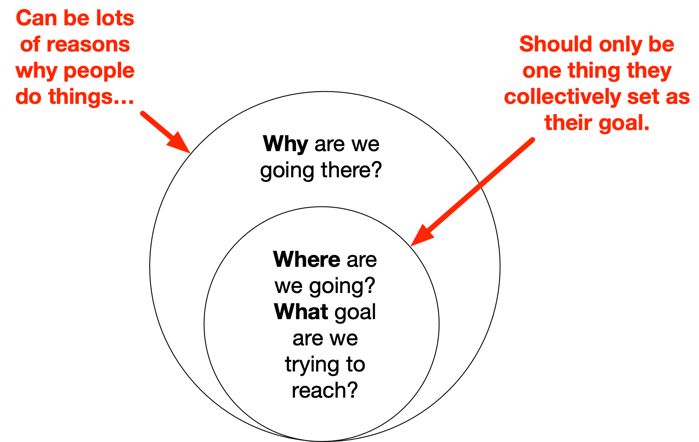 Said another way, if we both agree that the goal state (Vision) is a hole in the backyard, then it is quite likely that a hole will come about. But if my why is to plant a tree and your why is to get in shape, then we might never find the common goal of digging a hole in the first place. It's not that the whys are not important, they are...to you. But to the collective, the what has to be agreed upon or your chances of reaching your goal will be substantially impaired.
Said another way, if we both agree that the goal state (Vision) is a hole in the backyard, then it is quite likely that a hole will come about. But if my why is to plant a tree and your why is to get in shape, then we might never find the common goal of digging a hole in the first place. It's not that the whys are not important, they are...to you. But to the collective, the what has to be agreed upon or your chances of reaching your goal will be substantially impaired.
Learn more about VMCL in the book Flock Not Clock
Or get trained online in Systems Leadership
.png?width=150&height=150&name=CRL%20GOAT%20Logo%20(4).png)


